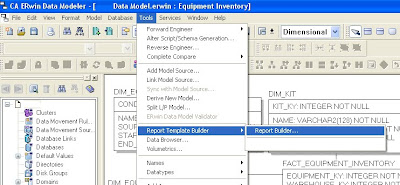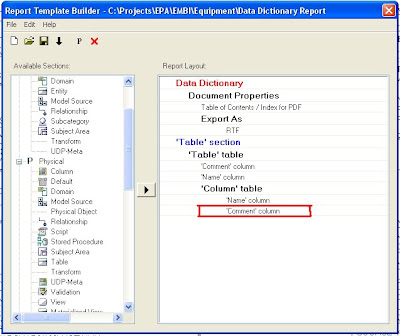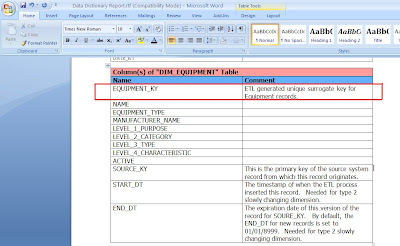Is there any way to guarantee project success? Absolutely not, however, examining lessons learned from past projects can reveal valuable information to help ensure project success. Here we will look at processes, procedures and people to determine how to optimize project performances. Best practice project management procedures require that planning takes time and attention. Most seasoned project managers can recall a project that failed due to rushed (or no) planning. The project manager and project team are also important to project success. What makes a good project manager or project team? Corporate culture plays a strong role in aiding or hindering quality project management. It is important to keep in mind what has and hasn’t worked in the past as you plan and implement the project.
I once lead a project which was viewed as easy by the management and as very risky by the project team. Management continuously told us this was a piece of cake (of course they wanted to believe this!). As a good project team, we conducted risk analysis and believed this to be very risky. Amazing that those of us who were going to be working on the project knew from the start that it would be one of the hardest things we ever did. All the scary facts were there: lean staffing and a late start, the team had absolutely no experience in some aspects of the project and the requirements on our statement of work did not match the signed customer contract. In addition, morale was low because we were short of resources and upper level management reminded often that our performance was poor. We weren’t meeting project budgets or timelines
The project issues got worse as time went on. A key team member quit when the project had just one month left to go and some of the team members did NOT get along. Management continued to ignore the project issues, still seeing the project as an easy win.
Some very interesting things happened on this project which resulted in its eventual success. To improve team attitude, we attended an inspiring seminar that helped us build an improved team attitude. The seminar reminded the team that you own the results of what you do. The attitude changed from “we are doomed” to “we will make this successful.” The fact that we were seen as performing poorly was both good and bad for us. This brought morale down but motivated us to “show leadership that we could succeed”. In an effort toward motivating the team, I did something I don’t think I would recommend to others but it worked for the project. I arrived at work very early and left when the last team member left. This made for very long hours and included weekends and holidays. I learned to test and run the equipment we were building. The team appreciated my hands-on approach and this helped grow a good team relationship.
All the team’s efforts were worth it in the end as the project succeeded. We had happy stakeholders – the customer, our management and our suppliers (as part of our team). We had the satisfaction of knowing we had done well despite all obstacles.
Lessons Learned
What caused this project’s success? First we had a strong commitment to project goals. The Project goals were simple: 1. Customer satisfaction (providing the equipment they needed on time and working to spec) and 2. Turn around our poor performance record. Customer satisfaction is always a goal but this was also our first external (outside our own organization) customer, promising a good deal of future business if we succeeded. Satisfying management would change the corporate culture as they recognized our competence and learned how to improve the culture to support project management. The team was very committed to the goals. Second, the team learned the power of teamwork and the power of strong commitment to doing things right to achieve project objectives. People understood that they could get beyond their issues with other team members by concentrating on the target – to make the project succeed. We had a good amount of discussion on the effect of dependent tasks on each other. Prior to this project, the team members focused on their own tasks without paying attention to the entire project plan. Third, we included the key stakeholders on the team. We worked with the customer both in showing the project progress as time went on as well as helping the customer in tasks they needed to complete for the project. We negotiated a mutually beneficial relationship with our vendors and included them on the project team. The vendors promised their quickest turnaround when we encountered sudden specialized needs (such as quick build of custom parts). We promised a good amount of future business to the vendors. This stakeholder participation lowered risk, lowered scope creep, and ensure that what we produced was what the customer needed.
What could we have done better? We didn’t have the resources available to start the project when we first received the contract so we had to start 2 months later. This required some rushing of the planning phase. In addition, we needed a more supportive corporate culture and improved team effort and attitude.
What are other ways to ensure project success? First we take a look at the elements of project management that are very important to project success. Next, we take a look at the people and the organization. What qualities do the Project Manager, Project Team and the organization need to promote eh best project management?
Working toward Successful Projects
At Project start: Defining Success Criteria, Considering Stakeholders and Project Planning
The first phase of a project’s lifecycle is very critical to its success. It is always important to complete a project in the timeliest manner but skimping on planning can lead to project failure. Once the project has been proven to be valuable to the organization, careful planning is needed. The stakeholders should be identified and analyzed. The key stakeholders define the project’s success criteria. Rather than rushing the planning to get on with the project and complete faster, in planning, you will find areas to trim time in implementation.
How many times have you heard people say “we never have time to plan but we always have time to do it over”? For a project to succeed, the planning must be well thought out, thorough, documented and agreed upon. It is human nature to want to rush in and get started on a project, rather than spending considerable time planning. Yet it is well known that careful planning and project estimation is key to success of the project. Good planning can actually reduce the time required for the implementation phase. Important elements of project planning are stakeholder analysis, definition of success factors, team input and risk management planning.
Stakeholder analysis requires time and thought as there are the obvious stakeholders and the not so obvious stakeholders. There are stakeholders that determine if the project has succeeded and those that do not want the project to succeed. Among the stakeholders are people competing for your resources or with agendas that oppose your project. The Project Manager needs to formulate strategy for dealing with all stakeholders, ensuring key stakeholders participate as team members and negotiating with stakeholders that are competing for the same resources.
While the project manager and project team must bring the project in on time and in budget, this does not define success. In the end, the customer declares the project successful or failed. For this reason, the first step in Project Management is in understanding the project’s objectives. The Project Manager and team must work very closely with the customer and all stakeholders to ensure clear understanding of the critical success factors as well as understanding stakeholder issues . From the success factors, metrics should be defined to ensure the success factors can be demonstrated at the conclusion of the project.
As part of the stakeholder analysis, identify the Executive sponsor and determine the level of support provided by this project champion. If the project does not have good executive sponsorship, it is not likely to succeed. I once directed a project for a client to solve a problem identified in an audit. In a mid-project review, the client informed me that they did not agree with the audit finding and, therefore, did not see the value of the project. They allowed the project to complete through the pilot phase but not to production.
Sometimes the stakeholders have unrealistic expectations. Customers almost always want it yesterday, cheap and perfect! The project’s schedule, budget or scope, as defined by the client, may not be reasonable. When we were designing custom equipment for our own company the schedule was set by the customer with no regard to how long it should take, the budget was set by the customer based on what the customer could pay and, of course, the technical specification was set by the customer. Therefore, the budget, schedule, specification and stakeholder expectations were unrealistic. An example of both unrealistic expectations and improper customer strategy involved a project I was handed on my first day with a company. The project team was to design a machine that would automate work that was currently done manually. When it was transferred to me, the project was several months into its timeline with no design or concept developed. Yet, the customer was informed that the project was still on track. I recovered the situation by explaining the issue (while begging forgiveness) and bringing the customer onto the design team. As the customer had design concepts of his own, this plan worked out.
Throughout the Project: Managing Risk and Change
Scope creep is a big issue in project management. The project plan works for the scope of the project agreed to in the planning stage. As the project progresses, stakeholders, customers and even project team members can see opportunities to make the solution even better than originally planned. While this improvement sounds good, it will lead to cost overrun and schedule slippage. The Change Management process must be well established and must be adhered to by all involved with the project. Each change needs to be clearly documented, providing the impact to budget, schedule, resources, and risk and project results. The decision to include the change belongs to the project’s customer. On one project I managed, we decided that we should go forward with most of the customer out-of-scope changes simply to ensure customer satisfaction. This backfired on us. When the project was late and over budget, the customer saw this as project failure despite all the “free” changes we provided.
While the risk taker may not see the value to risk management planning, this is very important in project management. The risk management plan is not a document to be filed away once the planning is complete. The risks must be analyzed, documented and reviewed on a regular, ongoing basis. As the project progresses, risk mitigation activities will need to be completed as the issues occur and new risks will be discovered and included in the plan. Think of risk management planning as always having a plan A, plan B, and plan C.
What makes a good Project Manager?
As leader of the project team, the Project Manager takes care of obstacles that get in the way of the project team. This attitude motivates the team and ensures the project is run efficiently. As a good leader, the project manager will build the trust and confidence of the project team members, listening to team member views and seeking their expert advice. As leader, the project manager should acknowledge and recognize team members for their contribution. The type of project manager that a project team does not like is the project manager who is hands-off on the project, expects the team to do all the work and take all the responsibility and risk. This type of project manager is usually known for finger pointing (all errors are made by a team member) and stealing credit when things go right.
The Project Manager must help promote efficiency. I came into an organization consisting mostly of engineers and quickly discovered that they did not appreciated project management. I soon discovered that this attitude resulted from their current project manage processes. The project management meetings took up a great deal of the team’s time. Furthermore, they did not see value in attending the meetings. The project manager conducted the meetings to update project status reports, not to hear from the team about current issues. Thanks to the previous project managers, I learned a valuable lesson: one way to show respect is to not waste that person’s time and never forget the value of listening. A meeting needs a purpose, an agenda and a chance for each team member to discuss what he or she feels is important to the purpose of the meeting. Attendees need to walk away from the meeting knowing that they gained something from attending.
Enthusiasm spreads; therefore, if the Project Manager is enthusiastic, the team is more likely to be enthusiastic. The attitude of ownership of the project and its results works much the same way. If the project manager believes that the team owns the results of the project, the chances of success are much higher. The Project Manager can influence the team to understand the importance of owning the results.
A very difficult task of a project manager is staying on top of project details while, at the same time, being able to see the big picture. The project manager must be aware of how the project relates to the business and how it fits in with other projects. On the other hand, the project manager must be close enough to the details to deal with issues as they occur.
Even with a carefully planned project, things change constantly as the project progresses and the project manager must make appropriate, quick decisions. A project manager cannot pass all decision making up the chain of management or push all decisions down to the team. There will be many decisions that need to be made to keep the project on course. In some cases, the project team can take time to analyze the situation and determine the best action and this is the best course if schedule will not be affected. Good Project Managers can judge which is appropriate – a quick decision or more thorough analysis of the issue.
The project manager must negotiate with the client, the stakeholders, vendors, the project team members and the organization’s management. Good skill in negotiating can result in customer and stakeholder satisfaction, optimized pricing from suppliers and optimized efficiency from the team members.
What makes a good project team?
A good project team recognizes its ownership of the results of its efforts. Projects don’t just happen; they are planned and implemented – by the project team, the “owners” of the project. Characteristics of good project teams include: cooperation, collaboration, communication, strong interest in the project and strong interest in achieving the project goals. Just like a sports team, the project team must be more strongly concerned with the results from the team’s effort than with individual achievements. We see the struggle to achieve this team attitude in sports and it is not easier for a project team member in a society where individual career success is typically dependent on individual achievement. The project manager and the corporate culture can promote the importance of team effort by balancing rewards for team effort as well as individual efforts.
One element of cooperation involves clearly understanding the affect of each team member’s tasks on the other tasks as well as the overall schedule. One PMO I worked in had very aggressive project schedules. Rather than raising flags that the schedules were unreasonable, the project teams would develop schedules that they could not meet. Trying to keep to the overall schedule always meant that the last tasks were done on an extremely short and unrealistic timeline, putting a great deal of stress on the team members who had to wait until the end to complete his/ her tasks. After completing a project where this occurred, the team had a lessons learned session and this issue was brought up. After much discussion, the team members who had the earlier tasks agreed to determine ways to bring in their task schedules to avoid this problem on the next project.
Open team communication is important. It is very detrimental to a project if team members are adverse to bringing up issues, concerns or anything that may be seen as a mistake. Finger pointing does not make for good teamwork. Team members should bring up issues and problems and should not feel they have to hide mistakes.
The Project Management Organization
The organization keeps the project management system optimized through: 1. A proactive, customer- driven culture that puts emphasis on planning and monitoring, 2. High level support of project management, 3. Fostering innovation through allowing mistakes and encouraging open communication, and 4. Well defined and understood processes.
Project management processes and procedures need to be adaptable. The process should never be the same for a large complex project and for a small, quick straight forward project. Yet some organizations do not have flexibilities in their project management system.
Increasingly, businesses are seeing the value of project management as it brings efficiency and order to an organization. As globalization increases, strategy and planning are more important to keeping a business competitive. Because good Project Management helps an organization achieves its goals, the leadership needs to foster and support an environment that promotes Project Management disciplines. To support good project management, the business needs to promote innovation. This requires taking chances, which can lead to mistakes but can also lead to great discoveries. Communication, cooperation and collaboration are important both up and down the chain of command.
Toward Project SuccessBest practices in Project Management require looking to the past, present and future:
· Look to the past –remembering what has worked and what hasn’t worked.
· In the Present - the project manager and project team must pay careful attention to all that is happening on the project t each day.
· Look to the future - through careful planning, adjusting as required and carrying out risk mitigation activities.
There are no easy answers to ensuring project success as there are many elements of the business as well as the project itself which can contribute to a project’s success or failure. It is important for the project manager and project team to have the characteristics and disciplines that lead to winning projects, however, the team needs proper organizational and cultural support for project success. On the other hand, if the processes and procedures aren’t optimized, using best practices, the project is more likely to fail.



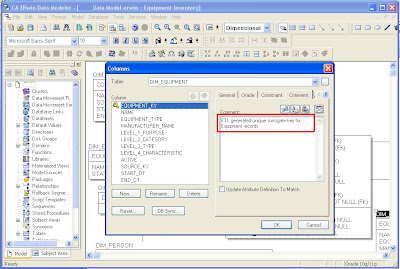
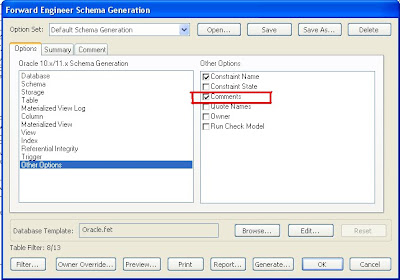
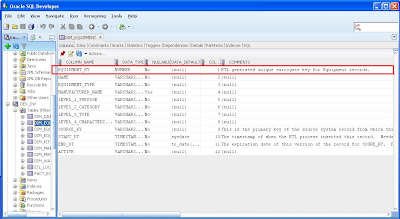 Step 4: Use ERwin’s Report Builder to create a Data Dictionary document. Report Builder queries the ERwin data model to create high quality PDF, Word, XML, or HTML documents that can be used as client deliverables. The screenshots below show the basic steps and a sample RTF output file.
Step 4: Use ERwin’s Report Builder to create a Data Dictionary document. Report Builder queries the ERwin data model to create high quality PDF, Word, XML, or HTML documents that can be used as client deliverables. The screenshots below show the basic steps and a sample RTF output file.